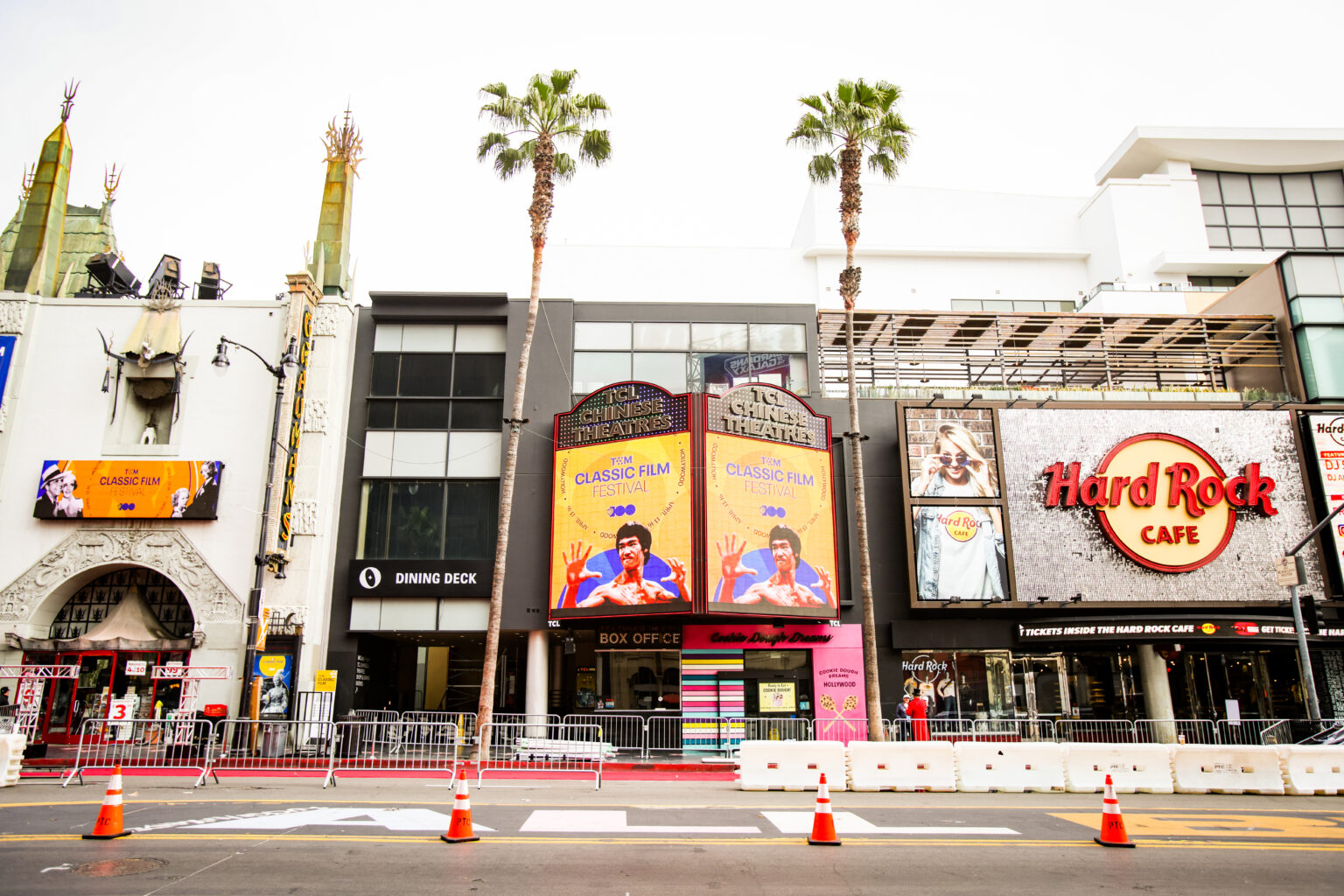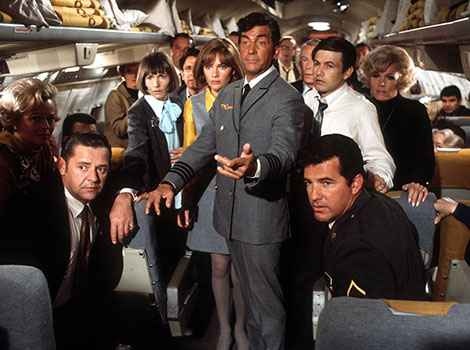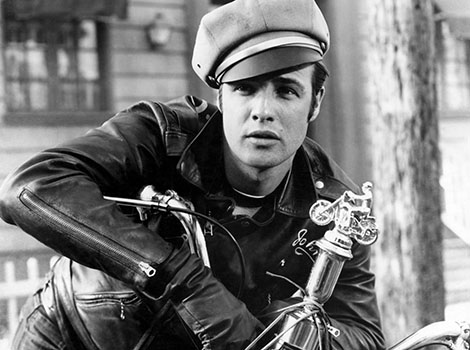by Christopher James

The only thing more disasterous than a gang of bikers or a bomb threat on a plane is light rain in Los Angeles. All joking aside, it's always great to return to the Hollywood and Highland center for another year of the Turner Classic Movies Film Festival.
The festival was kicked off with a red carpet screening of a freshly restored Rio Bravo, with Steven Spielberg, Paul Thomas Anderson and Angie Dickinson as special guests. The opening night film is part of WB's 100 year anniversary, which will be a theme of the weekend with many of the celebrations. Rather than watch Howard Hawks' epic western, I opted to fill a couple other blind spots...

Airport (1970)
There’s a reason this film is called Airport and its spoof is called Airplane! Though it's billed as a star-studded epic, Airport spends a ton of time with minutiae, particularly in said airport. This 1970 disaster film stitched together Old Hollywood and New Hollywood, starting a trend of ensemble pieces all set in various perilous situations (The Towering Inferno, The Poseidon Adventure, etc). Airport does not have the inventive nature of The Poseidon Adventure, but it has plenty of entertainment value across its various storylines and tones.
Mel Bakersfeld (Burt Lancaster) is an airport manager trying to get a grounded aircraft off a tarmac during the biggest snowstorm in years for Chicago, much to the chagrin of his wife (Dana Wynter). His family trouble is not just on the ground, but also midair, as his brother-in-law, pilot Vernon Demerest (Dean Martin) has filed a complaint about Mel’s work at the airport before he takes off on a flight to Rome. Who are these two weathered, old stars paired with? Hot new starlets of course. Mel might not come home to his wife, but he has plenty of chemistry with Tanya Livingston (Jean Seberg), a customer service agent for the TGA airline. Vernon has already taken his affair much further, as he realizes his stewardess mistress, Gwen (Jacqueline Bissett). These main story arteries combine with plenty of other characters for a third act thriller, as a man with a bomb sits with a plan to blow up the flight to Rome that half the cast is on.
Did I choose to see this movie because of a big bomb set piece? No. I just had to fix a blind spot in my supporting actress smackdown participation, as Helen Hayes won for this film and Maureen Stapleton was nominated. For having two supporting actress nominations, the film doesn’t leave a lot of space for great acting. As noted in the smackdown, that doesn’t stop these consummate professionals from trying. Helen Hayes steals every moment as serial stowaway Ada Quonsett. While the smackdown may have been split on her work, I fell on the more positive side, grinning from ear to ear every moment she showed up to steal a scene. Hayes knows how to play each moment for maximum laughs, such as fooling a young man into believing she’s having a medical incident only to sneak away. It’s an incredibly thin role though. Maureen Stapleton is given even less to do as Inez Guerro, the wife of the bomber. Yet, Stapleton makes the most of each moment, opting for stunned silence and outbursts of guilt as her character moments. As technically sound as Stapleton’s performance is, Inez is never given enough to be a character, while at least Ada is a woman on the loose, one that we’d like to follow along for more adventures.
As mainstream as Airport is, it’s not without visual flair. It may not have been the director’s intention, but so many of the long shots and moments observing the intricacies of the titular location serve as a fascinating time capsule into 1970. A POV shot as Jacqueline Bissett’s Gwen as she heads down the aisle of the plane for a routine check provides a number of wonderful sight gags and character moments. She passes by a large shrimp platter in first class, followed by a menagerie of guests chattering it up - nuns, families (obnoxious and unobnoxious), smokers and an elderly stowaway. It’s also one of the few times we get a true POV within this bloated, yet fun, kaleidoscope of celebrities. Through the lens of a classic film festival, Airport was a perfect way to time travel to the 70s. Grade: B-

The Wild One (1953)
Gremlins director Joe Dante introduced The Wild One screening this evening, stating that this film started a craze of biker movies, despite being a flop on initial release. By his estimation, the biker film replaced the western. It’s beyond clear watching László Benedek’s film that it was directly lifted from westerns. Outsiders come into town and engage in a standoff with the law. Who will win - chaos or control? What really is so moral about control anyway? The Wild One is a breathtaking knockout. In just 79 minutes it gifts the audience with a live-wire Marlon Brando performance and a ripped from the headlines crime tale. Shooting the film in black and white separates it from its western influences - this is a darker story where night can lead to hedonism and violence.
Based on the true story of the town of Hollister, California (yes, like the t-shirt brand; no, it’s not a fun beach town), The Wild One carries a very 50s warning at the front that all towns should prevent this story from happening. If this doesn’t make things expressly clear, the censors tried to bend this complicated rebel story into a cry for civility. What they didn’t plan on would be Marlon Brando, sauntering onto the screen with a square jaw, emotive eyes and a perfectly tailored leather jacket - a perfect cross between a straight man’s biker ideal and a gay man’s Tom of Finland fixation.
Brando’s Johnny Strabler leads the biker gang, The Black Rebels Motorcycle Club (BRMC), which takes off on weekends and touches down on poor, unsuspecting towns. In this latest one, the club takes over a very welcome town bar and diner, which appreciates the business, raises some hell at night and needles some of the town folk. Even when they run in with their rival gang, led by a drunken Lee Marvin, both Johnny and Marvin’s Chino end up in a laughing embrace. The anarchy of the motorcycle gangs allows them to effectively take over the town, with most of the young women going along with it.A girl asks, “what do you rebel against?” and Johnny replies, “What you got?” There’s not a grievance in particular, in a group these men can feel power, passion and community. However, some fender benders and inconveniences cause the older town folk to wage war on the BRMC. Soon, a vigilante hunt to stop Johnny and his gang’s debauchery is underfoot.
While the men all roam about town like destructive Gremlins, Johnny romances Kathie (Mary Murphy), the daughter of the ineffective town sheriff (Robert Keith). Early on in the movie, Johnny’s gang steals a 2nd place racing trophy and gives it to Johnny, who tries at various points to give it to Kathie. Brando is no stranger to business with props, but he really makes a meal of handling this trophy, making it a phallic symbol of his worth. For most of the first half of the film, Johnny is the strong leader, punching out those who defy him. Yet, when it comes down to it, Johnny is a tearful man who wants to find his place. A tearful reunion with his bike as the world crashes around him allows Brando to put his acting chops on full display. The Wild One is likely most remembered for stills of Marlon Brando in his leather jacket. However, it is strong enough that it should also be remembered for its quality. Grade: A-
Follow along from today through Monday, April 17th for Christopher James’ account of the TCM Film Festival. Let us know what you thought of these movies in the comments.